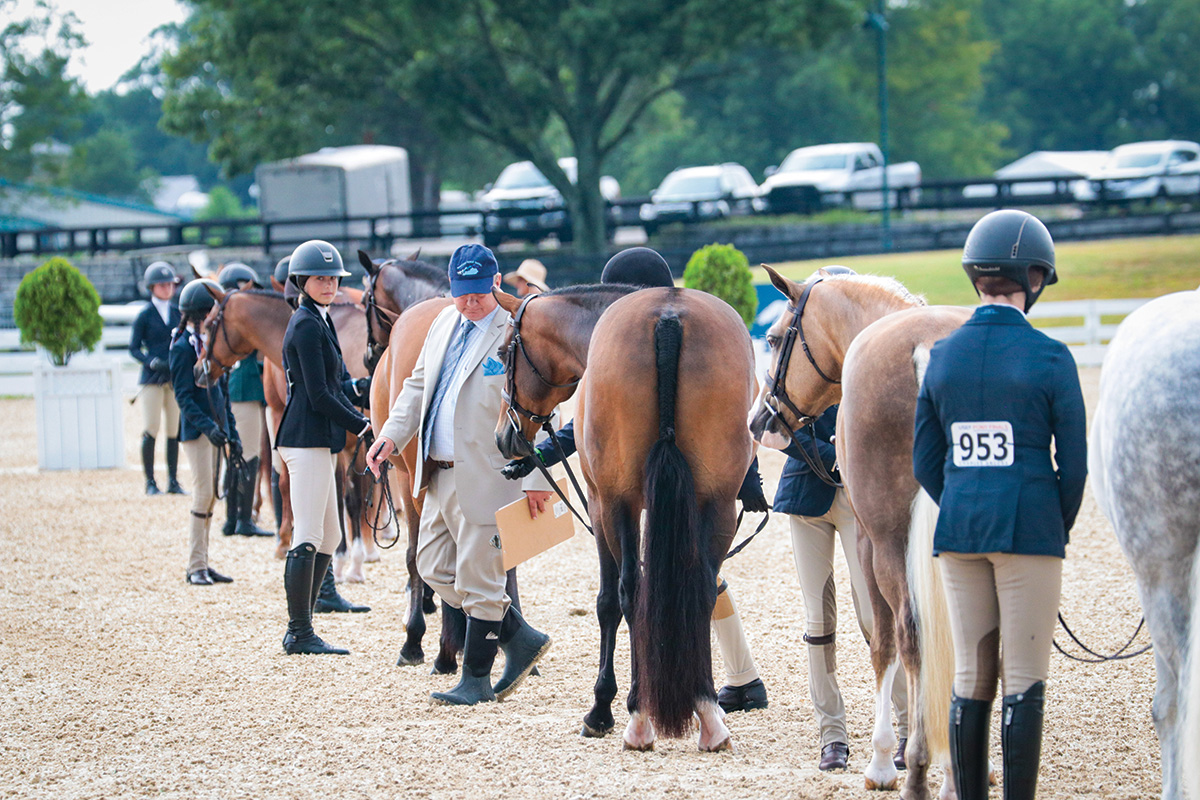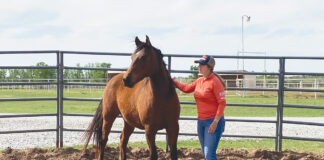
A recent study has shown that judges tend to favor pudgy ponies over their more-svelte counterparts in the show ring. This is despite the fact that carrying extra weight may predispose these horses and ponies to such health conditions as an increased risk of laminitis or founder, and adds additional strain on joints, hooves, heart and lungs.
Case in Point
Shannon Pratt-Phillips, Ph.D., an equine nutrition professor at North Carolina State University, and a team of researchers visually evaluated 337 ponies at the 2021 United States Equestrian Federation (USEF) Pony Finals, presented by Honor Hill Farms. Pony Finals is the year-end championship event for qualified pony riders from across the country; competition is grouped by pony height (small, medium and large), show experience (regular and green), and rider age.
The scientists evaluated each of the ponies as they prepared for the model (in-hand) phase of competition, which evaluates the pony’s conformation and physical blemishes, but also takes into account handler and pony turnout and presentation.
The two researchers evaluating the ponies had extensive body condition scoring experience and were also experts at cresty neck scoring (CNS). CNS is a 0 to 5 scale used to measure the accumulation of fat along the top of the neck. The amount of fat found in this area can be disproportionate to the amount of total body fat; a score of 3 or higher could signal an increased risk of equine metabolic syndrome and laminitis.
The CNS and the BCS from both evaluators were averaged and compared to the model scores from the three Pony Finals judges. The scientists found that the medium ponies were fatter and crestier than the large ponies. They also found a positive correlation between BCS and the model score from judges in the large ponies, suggesting that Pony Finals judges prefer a heavier pony in the model.
These findings concerned the researchers, who reported that the additional weight the ponies carry could affect their health and longevity, as well as their performance. They recommend that efforts be made to encourage judges to reward a more ideal body condition.
It’s important to remember that USEF Pony Finals judges are some of the top judges in the nation; many have judged for decades and are considered the best in their field. The findings beg two questions: How can judges be encouraged to reward non-chubby ponies, and more broadly, is there truly a pony weight issue at all?
How are Judges Trained?
U.S. Equestrian is the national governing body for most horse sport in the United States. This organization issues licenses for all hunter and jumper judges (and others), which qualifies them to judge at U.S. Equestrian-sanctioned competitions.
However, U.S. Equestrian does not provide the materials the judges can study from to pass their licensing exams; these are provided by the United States Hunter Jumper Association (USHJA), a national affiliate of U.S. Equestrian that represents all levels of hunter and jumper participants. Material for the clinics is sourced from the U.S. Equestrian Rulebook and the USHJA Officials’ Education Committee curriculum, according to USHJA Officials’ Education Committee (OEC) members.
To become a U.S. Equestrian-licensed judge, one must apprentice under established judges at multiple licensed competitions, and one must have positive evaluations from the experienced judges.
Applicants must also attend a clinic. Ongoing education for carded judges is required: Each judge must attend a clinic to maintain their license every three to five years, depending on the license level.
Would pony weight and condition ever be addressed in formal settings like rulebooks? Not likely, says the USHJA OEC.
“This is an example of a topical issue addressed formally in clinics [and] in forums, as well as informally between licensed judges,” committee members say. “Topical issues, such as rule changes and more nuanced trends are addressed in the USHJA clinics.”
The OEC hosts periodic forums geared toward licensed judges and course designers, where a panel leads an in-depth discussion on current issues. Additional ways the “weight issue” could be addressed is through OEC-produced webinars.
The OEC points out that equine weight is not addressed anywhere in the U.S. Equestrian rulebook, but both U.S. Equestrian and USHJA have multiple, extensive best practices efforts in place. Many committees, such as the USHJA Horse and Rider Advocate Committee, work to educate membership on a multitude of equine management topics such as equine weight and wellness. Additionally, USHJA members can always contact committee members with questions and concerns on topics that fall under their purview, the OEC reiterates.
“Ultimately, the job of equine management broadly—and equine weight management specifically—does not fall on licensed judges. Their job is to pin the class based on performance in the competition ring in that class on that day,” the OEC says.
A Judge’s Perspective on the Pony Weight Issue
Kathleen Stamps, a licensed “R” judge with 15 years of experience judging some of the best hunters, jumpers, and hunt seat equitation riders in the nation, concurs.
“While data collection is a good tool to evaluate and interpret, it’s not the way the ponies are being judged,” she explains. “Judges are looking at the whole picture of the pony and placing that pony in accordance with the rest of the ponies in the class.”
The model class, where the researchers saw the ponies (but did not touch them), is judged with one goal in mind: “The best body wins in the class,” says Stamps. “The super fat pony could be first or last, depending on what other ponies are in the class. There are so many factors to consider, including issues that can’t be overlooked, like crooked legs, bad feet, a bone spavin [and other conformational issues].”
The pony may not be stood up well or may not jog or just be having a bad day; things happen that have nothing to do with weight, Stamps reiterates. This is why it’s difficult to correlate the scientists’ scores with the judges’ outcome in the model.
Though this study suggests a significant relationship between pony weight and Pony Finals model placings, it’s critical to remember that more than just how the pony looks was being judged: It’s the overall picture the pony and handler presented, on that day, in that class, under those judges. Horse showing is, after all, subjective.
This article about judges’ preference of weight in ponies appeared in the April 2023 issue of Horse Illustrated magazine. Click here to subscribe!





